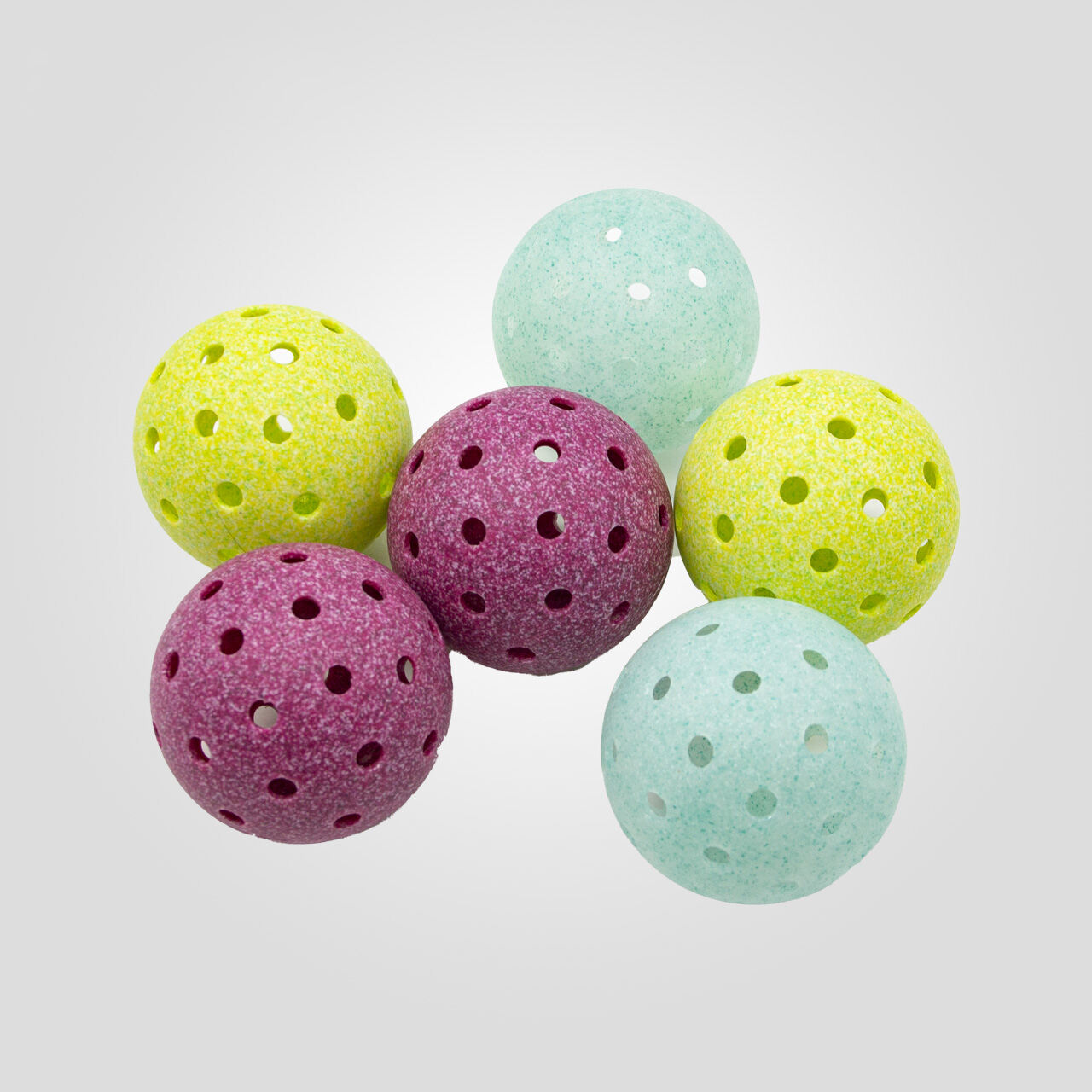Understanding the Growing Demand for Quality Pickleball Equipment
The pickleball industry has experienced unprecedented growth, with equipment demands reaching new heights. As one of the fastest-growing sports in America, the need for high-quality pickleball balls has become increasingly crucial for importers and suppliers. The distinction between indoor and outdoor pickleball balls plays a vital role in meeting player expectations and ensuring market success.
Importers must navigate various factors when selecting pickleball balls for their inventory, from material composition to performance characteristics. Understanding these elements not only helps in making informed procurement decisions but also ensures customer satisfaction and business growth in this dynamic market.
Essential Characteristics of Indoor Pickleball Balls
Material Composition and Design Features
Indoor pickleball balls are specifically engineered with lighter materials and larger holes compared to their outdoor counterparts. These balls typically feature softer plastic compounds that optimize performance in controlled indoor environments. The precise hole pattern and size distribution ensure consistent flight patterns and reduced noise levels, making them ideal for indoor facility use.
The manufacturing process for indoor pickleball balls focuses on maintaining uniform wall thickness and weight distribution. This attention to detail results in predictable bounce characteristics and enhanced control during gameplay, essential features for indoor court conditions.
Performance Specifications for Indoor Play
Indoor pickleball balls exhibit distinct performance characteristics that cater to climate-controlled environments. They typically weigh between 0.78 and 0.935 ounces and feature precisely engineered bounce properties. The controlled indoor setting allows for more finesse-based play, and these balls are designed to complement this style.
Temperature stability is another crucial factor for indoor pickleball balls. Unlike outdoor variants, these balls maintain consistent performance across various indoor facility temperatures, providing reliable gameplay experiences throughout the year.
Outdoor Pickleball Ball Requirements
Durability and Weather Resistance
Outdoor pickleball balls demand superior durability to withstand various weather conditions and playing surfaces. Manufacturers utilize harder plastic compounds and specialized UV-resistant materials to prevent degradation from sun exposure. The construction must balance resilience with performance to ensure consistent play characteristics despite environmental challenges.
The surface texture of outdoor pickleball balls includes special treatments that enhance grip and control in varying weather conditions. This feature helps players maintain accuracy and spin control even in challenging outdoor environments.
Design Adaptations for External Elements
Outdoor pickleball balls feature smaller holes and thicker walls compared to indoor versions, helping them maintain stability in windy conditions. The weight distribution and aerodynamic properties are carefully calculated to ensure predictable flight patterns even in light to moderate wind situations.
These balls also incorporate specific design elements to handle temperature fluctuations and moisture exposure. The material composition includes additives that prevent brittleness in cold weather and maintain structural integrity in high temperatures.
Quality Control and Testing Standards
Certification Requirements
Importers must ensure their pickleball balls meet USA Pickleball Association (USAPA) specifications for official tournament play. This includes precise measurements for diameter, weight, and bounce height. Certification testing involves rigorous protocols that examine both physical properties and performance characteristics.
Quality control measures should include batch testing for consistency and regular audits of manufacturing processes. Documentation of compliance with international sporting goods standards adds value to the import portfolio and builds trust with distributors.
Performance Testing Protocols
Comprehensive testing procedures should evaluate bounce consistency, flight patterns, and durability under various conditions. For outdoor balls, weathering tests assess UV resistance and performance in different temperature ranges. Indoor balls undergo noise level testing and bounce uniformity checks.
Importers should establish relationships with testing facilities that can provide detailed analysis reports and performance certificates. This data helps in making informed inventory decisions and supports marketing claims about product quality.
Procurement Strategies for Importers
Supplier Evaluation Criteria
Selecting reliable manufacturers requires thorough evaluation of production capabilities, quality control systems, and compliance with international standards. Importers should assess potential suppliers' track records in producing consistent, high-quality pickleball balls and their ability to meet volume requirements.
Building strong supplier relationships involves regular factory audits, clear communication channels, and established quality agreements. These partnerships ensure consistent product quality and timely delivery of orders.
Inventory Management Considerations
Effective inventory management requires understanding seasonal demand patterns and maintaining appropriate stock levels of both indoor and outdoor pickleball balls. Importers should develop forecasting models that account for growing market demand and seasonal playing preferences.
Strategic planning of order quantities and delivery schedules helps optimize warehouse space and reduce carrying costs while ensuring product availability. Consider implementing inventory tracking systems to monitor stock levels and movement patterns.
Market Positioning and Distribution
Target Market Analysis
Understanding the diverse needs of different market segments helps importers optimize their product mix. Professional facilities require tournament-grade balls, while recreational players may prefer more durable options. Analyzing market trends and player preferences guides inventory selection and pricing strategies.
Geographic considerations also influence product selection, as regions with different climates and playing conditions may have varying demands for indoor versus outdoor pickleball balls.
Distribution Channel Development
Establishing effective distribution networks ensures products reach various market segments efficiently. Working with specialty sporting goods retailers, online marketplaces, and facility suppliers creates diverse sales channels. Building relationships with pickleball clubs and tournament organizers can lead to bulk purchase opportunities.
Implementing targeted marketing strategies for different distribution channels helps maximize sales potential and market penetration. Educational materials and product specifications should be readily available to support sales efforts.
Frequently Asked Questions
What is the shelf life of pickleball balls?
Quality pickleball balls typically have a shelf life of 2-3 years when stored properly in climate-controlled conditions. However, actual playing life varies significantly based on usage intensity and environmental conditions. Indoor balls generally last longer due to controlled playing conditions.
How can importers verify USAPA certification?
Importers should request official certification documentation from manufacturers and cross-reference with USAPA approved equipment lists. Third-party testing laboratories can provide additional verification of compliance with official specifications.
What are the minimum order quantities for importing pickleball balls?
Minimum order quantities vary by manufacturer but typically range from 1,000 to 5,000 units per style. Some suppliers may offer mixed container options allowing importers to combine different types of pickleball balls in one shipment to meet minimum requirements.


